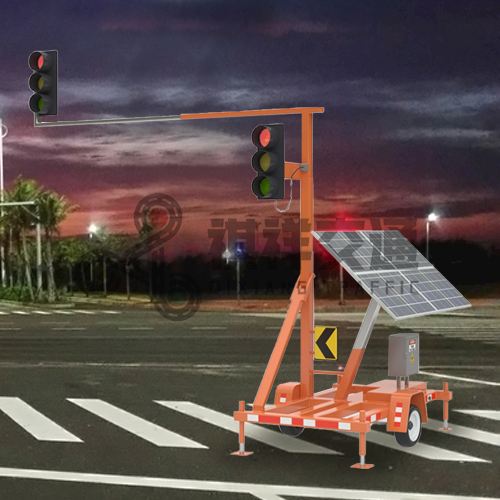Portable traffic lights play a vital role in managing traffic flow and ensuring safety on construction sites, roadworks, and temporary events. These portable systems are designed to mimic the functionality of traditional traffic lights, allowing for efficient traffic control in situations where permanent signals are impractical. Understanding the components of a portable traffic light is critical for those responsible for their deployment and operation.
At first glance, the design of a portable traffic light may seem simple, but its composition is actually quite complex. The main components of a portable traffic light system include the control unit, signal head, power supply, and communication equipment.
The control unit is the brains of the portable traffic light system. It is responsible for coordinating the timing and sequence of signals to ensure smooth and safe traffic. The control unit is programmed with specific timing for each signal phase, taking into account traffic patterns and road user needs.
The signal head is the most visible part of a portable traffic light system. These are the familiar red, amber, and green lights used to inform drivers and pedestrians when to stop, drive with caution, or move around. Signal heads are often equipped with high-intensity LEDs that can be easily seen even in bright daylight or adverse weather conditions.
Powering portable traffic light systems is another critical component. These systems are typically designed to run on batteries or generators, allowing for flexibility in deployment. Battery-powered units are ideal for short-term projects or events, while generator-powered systems are suitable for longer durations.
Communication equipment is also an important part of the portable traffic light system. These devices allow wireless connections between multiple traffic lights, allowing them to synchronize their signals and operate as a cohesive unit. This synchronization is crucial to ensure traffic moves efficiently through controlled areas.
In addition to these primary components, portable traffic light systems may also include auxiliary equipment such as mounting brackets, transport cases, and remote control units. These add-ons are designed to enhance the ease of deployment, operation, and maintenance of traffic light systems.
In the actual construction of portable traffic lights, materials such as durable plastic and aluminum are often used. These materials were chosen for their lightweight yet strong properties, making the traffic lights easy to transport and install, while also being able to withstand the rigors of outdoor use.
The electronic components within the traffic light system are also designed to withstand environmental factors such as moisture, dust, and temperature fluctuations. This ensures the system remains operational under a variety of conditions, providing reliable flow control when and where it is needed.
Portable traffic light systems are designed for easy installation and removal and can be quickly deployed and removed as needed. This portability is a key feature as it allows for efficient traffic management in ad hoc situations without the need for expensive and time-consuming infrastructure changes.
In summary, the composition of a portable traffic light is a carefully designed combination of the control unit, signal head, power supply, and communication equipment. These components work together to provide effective flow control in a portable, adaptable package. Understanding the composition and operation of portable traffic lights is critical to ensuring the safety and efficiency of temporary traffic management situations.
If you are interested in portable traffic lights, welcome to contact Qixiang to get a quote.
Post time: Jan-09-2024







